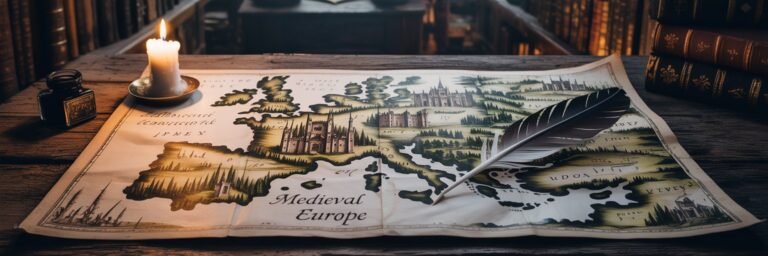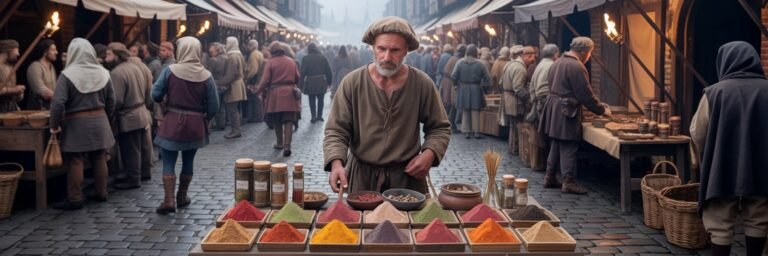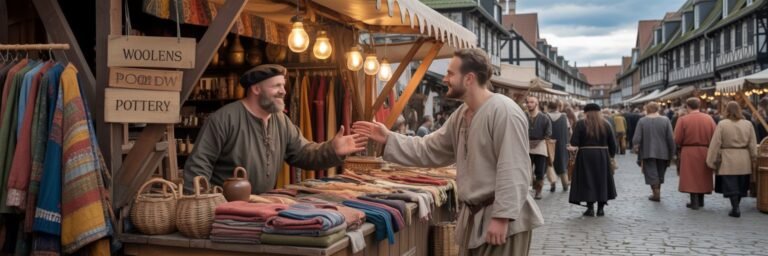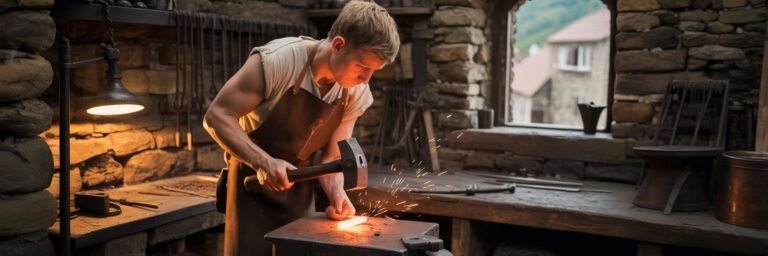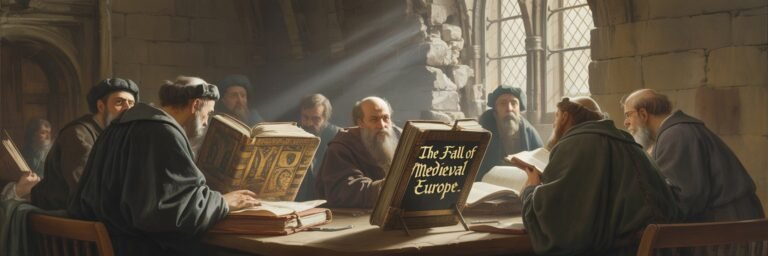INTRODUCTION
For many of us, the term ‘Medieval Europe’ conjures up familiar images of knights in shining armors, fair maidens, grand castles, and rampant disease. Yet this period of history, spanning roughly from the 5th to the late 15th Century, is so much richer and more complex than these stereotypes suggest. Our knowledge and assumptions about this epoch, often drawn from dramatized versions of history served up in films or novels, tend to distort the past. For centuries, historians have endeavored to shed light on this fascinating, albeit misrepresented era. Together, let’s embark on a journey through the revelatory landscapes of Medieval Europe.
HISTORICAL BACKGROUND
The Middle Ages, as they are also known, were sandwiched between the fall of the Western Roman Empire (in 476 AD) and the onset of Early Modern Europe with the Renaissance. Thus, medieval history unfolds as a veritable cauldron of human experience and societal evolution. Despite popular belief, after Rome’s fall, life did not spin into a chaos of darkness and ignorance. Instead, new civilizations rose from Rome’s ashes, each influenced by the remnants of the Empire. The Byzantine in the East, the Islamic Caliphate in the South, and the evolving Christendom in the West, which saw the rise of the Holy Roman Empire and Catholic Church’s religious authority.
Medieval Europe was home to powerful monarchs, devastating wars, exceptional art, and the birth of the university. It was an era marked by feudalism, monasticism, exploration, and the birth of national identities, as well as the ominous shadows of the Black Death and the Crusades.
THEORIES AND INTERPRETATIONS
Many theories have arisen regarding Medieval Europe, challenging more conventional narratives. Historical interpretations vary, especially regarding the Dark Ages, an overarching term used to describe the early part of the medieval period. While it is widely thought to be a time of cultural stagnation born of the fall of the Roman Empire, scholars like Petrarch propagated this theory in the 14th century, lamenting the perceived loss of classical learning and culture.
Other interpretations propose that the Dark Ages were times of considerable innovation and progress. Historians such as Charles Homer Haskins emphasize the “Renaissance of the 12th century,” highlighting the period’s remarkable advancements in philosophy, science, and political thought. Revolutionizing norms, this interpretation invites us to consider Medieval Europe with fresh, unencumbered perspectives.
MYSTERIES AND CONTROVERSIES
Medieval Europe is not without its fair share of mysteries and controversies. The alleged existence of the Holy Grail, the fascination with King Arthur’s legend, and the mystifying Templar treasure are just a few examples, each wrapped in layers of symbolism and religious sentiment.
Moreover, the Inquisition stirs considerable controversy, even today. Instituted by Pope Gregory IX in the 13th century, it was a mechanism for suppressing and punishing heresy. The terrifying legacy of the Inquisition, encompassing torture and public execution, continues to cast a dark shadow over the era.
SYMBOLISM AND CULTURAL SIGNIFICANCE
Symbols played an integral part in medieval life and continue to remain significant. The Cross was not only a profound religious symbol for Christians, but it also manifested in architecture (cross-shaped churches), and social practices (making the sign of the cross as a protective gesture). This period also saw the rise of heraldry – armorial bearings or shields represented lineage, alliances, and achievements.
Culturally, chivalry evolved as a fundamental concept, shaping societal norms and influencing aspects of honor, courtly love, and gallantry. Legendary figures such as Charlemagne, King Arthur, and Eleanor of Aquitaine left their indelible mark on medieval culture.
MODERN INVESTIGATIONS
In recent years, researchers have innovatively employed modern technologies in archaeology and anthropology to investigate medieval history. Techniques like carbon dating, genetic analysis, and ground-penetrating radar have ushered in new ages of discovery.
In 2012, the University of Leicester spearheaded an archaeological project which unearthed the remains of King Richard III, buried under a city council car park. A genetic analysis showcased a direct lineage from the Plantagenet king to modern descendants.
Similarly, scientists used ancient DNA analysis to trace the devastating path of Yersinia pestis, the bacterium causing the Black Death. This research accentuated the scale of one of humanity’s most catastrophic pandemics, altering our understanding of medieval history.
LEGACY AND CONCLUSION
The legacy of Medieval Europe is undeniable, shaping contemporary society in unique ways. It resonates in modern law, political structures, educational systems, and in the indomitable spirit of exploration that spurred on the Age of Discovery.
As we take a step back and look at this fascinating mosaic of centuries, we realize that it is rather rudimentary to categorize Medieval Europe as merely a violent transitional phase between Classical Antiquity and the Renaissance. This era was marked by intellectual vigor, cultural blossoming, and a profound evolution of societal structures.
So, while history textbooks might paint a simplified picture of knights, castles, and repression, the reality was far more intricate and fascinating. As historical narratives continue to evolve, our perception of this era can only get enriched and take on more depth and color. And, in this sense, the story of Medieval Europe continues to be written.


